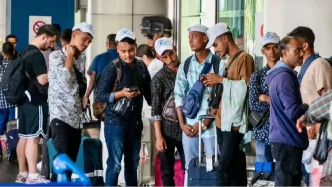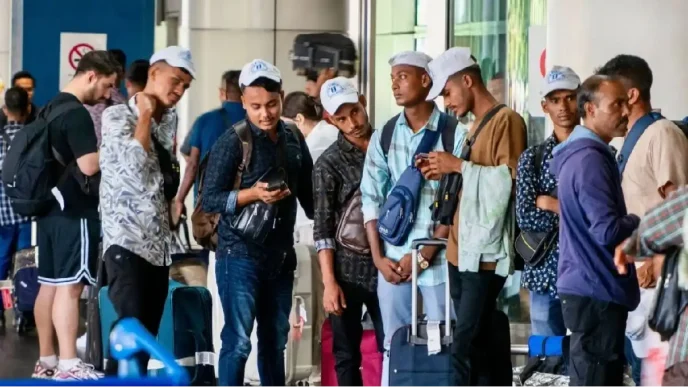Singapore has seen a troubling rise in the number of young people detained under a controversial law that permits imprisonment without trial, as authorities grapple with the persistent challenge of youth involvement in secret society activities. According to figures released by the Singapore Prison Service (SPS), 65 individuals aged 29 or younger were held under the Criminal Law (Temporary Provisions) Act (CLTPA) as of December 31, 2024, a marked increase from 46 in 2023 and 45 in 2022. Among them were eight teenagers, underscoring the deepening concern over youth gang affiliations in the city-state.
A Law of Last Resort
The CLTPA, first enacted in 1955 to combat gang violence during Singapore’s tumultuous early years, allows the Minister for Home Affairs to detain individuals or place them under police supervision for up to 12 months without a trial. It is invoked in cases where prosecution is deemed unfeasible, often due to witnesses’ reluctance to testify out of fear of reprisal. A police spokeswoman emphasized to local media that the law is used only as a “last resort” for serious crimes, including secret society activities, unlicensed moneylending, drug trafficking, and organized crime. “Our approach includes enforcement under the Penal Code and outreach to at-risk youths, with CLTPA being invoked sparingly,” she said.
As of the end of 2024, SPS reported a total of 100 CLTPA detainees across all age groups, with 99 of them incarcerated for secret society involvement. The data reveals a consistent pattern: the majority of young detainees over the past three years have been linked to these underground networks. While fewer than 10 individuals aged 19 or below were detained during this period, the upward trend in youth detentions has reignited debates over the balance between public safety and individual rights, as well as the effectiveness of rehabilitation over punitive measures.
The Lure of Gangs for Singapore’s Youth
Secret societies and street gangs in Singapore often operate as loosely organized groups with fluid memberships, preying on impressionable young people. “Gangs typically target youth as they are easily lured through the promise of a sense of brotherhood, companionship, and protection,” a police spokeswoman explained. This vulnerability is compounded by peer pressure and a desire for social belonging, particularly among teenagers and young adults who may lack strong familial or community ties.
From 2022 to 2024, over 1,300 suspected members of unlawful societies were arrested, reflecting the scale of the challenge facing law enforcement. Common offenses include unlawful assembly, rioting, and gang recruitment—crimes that disrupt the city-state’s reputation for order and safety. The Secret Societies Branch (SSB) of the Criminal Investigation Department plays a central role in tackling this issue through a dual strategy of enforcement and prevention, collaborating with agencies like the Ministry of Education and the Ministry of Social and Family Development (MSF) to reach at-risk youth before they are drawn into criminal networks.
Preventive and Rehabilitative Efforts
Beyond enforcement, Singapore has invested in upstream educational initiatives and downstream rehabilitation programs to steer young people away from gang life. Anti-gang talks are delivered to secondary school students, youth inmates at the Reformative Training Centre, and residents of facilities like the Singapore Boys’ Home. For those already entangled in secret societies, diversionary programs such as the Streetwise Programme offer a voluntary, structured six-month intervention. Administered by social service agencies and funded by MSF, it provides counseling and support from professional social workers and police officers. At-risk youth are often identified through police investigations, suppression operations, or referrals from schools and parents.
Inside Changi Prison, the SPS implements a range of rehabilitation initiatives for CLTPA detainees, including psychology-based correctional programs, family support sessions, work and education opportunities, and religious services. A notable initiative is the gang renunciation program, where inmates publicly declare their intent to sever ties with their gangs in a ceremony attended by family, SPS officers, and peers. Those who renounce their affiliations become eligible for complimentary tattoo removal to erase physical markers of their past—a symbolic step toward reintegration.
The Family Reintegration Programme, launched in 2019, further supports this process by equipping inmates and their families with skills to rebuild bonds. Facilitated open-visit sessions allow interactions without physical barriers, fostering emotional connections that are deemed critical for long-term rehabilitation, especially for younger detainees with intact family structures. “Having a stable family is key to the successful rehabilitation and reintegration of an inmate,” an SPS spokeswoman noted.
Challenges in Breaking the Cycle
Despite these efforts, renouncing gang membership remains a formidable challenge for young inmates. “Young inmates are generally more easily influenced by peer pressure and desire for social belonging. This makes it harder for them to renounce their gang membership,” an SPS spokeswoman acknowledged. Many lack family responsibilities, and the fear of social isolation upon release often drives them back to familiar networks. The SPS maintains a zero-tolerance policy toward gang-related activities within prisons to enforce discipline, but the psychological and social factors pulling youth back into crime pose a persistent hurdle.
Education offers a potential lifeline for some. Younger inmates with an interest in furthering their studies and sufficient remaining sentence time can pursue full-time education while incarcerated. However, the effectiveness of such programs varies, as not all detainees are motivated or eligible to participate. The broader question remains whether these rehabilitative measures can address the root causes of gang involvement—social alienation, economic disadvantage, and the allure of belonging—before young people encounter the criminal justice system.
Legal and Ethical Questions Surrounding CLTPA
The CLTPA itself is a lightning rod for criticism, given its provision for detention without trial. While authorities insist that safeguards are in place—such as requiring the public prosecutor’s consent and review by an independent advisory committee chaired by a Supreme Court judge—concerns persist about the potential for misuse and the impact on individual freedoms. The law’s extension for another five years in 2024, marking its 15th renewal since 1955, was met with cautious approval from lawmakers focused on public safety, but it also drew scrutiny from human rights advocates who argue that such measures risk eroding due process.
The police maintain that the CLTPA is indispensable for addressing egregious criminal activities that threaten Singapore’s security, particularly gang-related offenses that evade conventional prosecution due to witness intimidation. Yet, the rising number of young detainees raises questions about whether the law, originally designed for a different era, remains the most appropriate tool for tackling contemporary youth crime. If rehabilitation is the goal, critics ask, should resources be redirected from detention to community-based prevention programs that address vulnerabilities before they manifest as criminal behavior?
A Broader Societal Reflection
The spike in youth detentions under the CLTPA is not just a law enforcement issue; it reflects deeper societal dynamics in one of Asia’s most prosperous and tightly regulated nations. Singapore’s strict legal framework has long been credited with maintaining low crime rates, but the persistence of secret societies among the young suggests gaps in social cohesion and support systems. Why are so many young people still drawn to gangs despite the risks of severe punishment? Could economic pressures, educational disparities, or a lack of meaningful engagement opportunities be contributing factors?
Public sentiment, as gauged through local discussions and online platforms, reveals a divide. Some Singaporeans support the tough stance, viewing the CLTPA as a necessary deterrent to preserve the city-state’s hard-earned stability. Others express unease over the detention of teenagers and young adults without trial, advocating for a greater emphasis on rehabilitation over punishment. The government’s dual approach of enforcement and prevention attempts to address both sides, but the increasing numbers suggest that the balance has yet to be fully struck.
Looking Ahead: Safety Versus Second Chances
As Singapore continues to confront the challenge of youth gang involvement, the effectiveness of both the CLTPA and rehabilitation programs will remain under scrutiny. The rise in detentions signals a pressing need to refine strategies that prevent young people from joining secret societies in the first place, while ensuring that those who do are given genuine pathways to reform. With the law extended until at least 2029, the coming years will test whether Singapore can uphold its commitment to public safety without sacrificing the potential for redemption among its youngest offenders. For now, the stories of the 65 young detainees in Changi Prison serve as a stark reminder of the complex interplay between law, society, and second chances.














